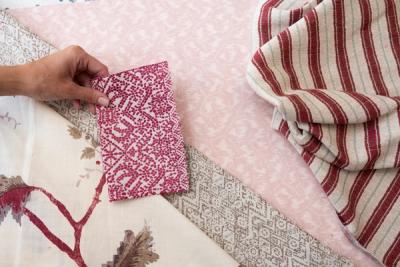Decoration
Pattern and Colour: 3 Tips for Judging Wallpaper Samples

Pattern and Colour: 3 Tips for Judging Wallpaper Samples
We don’t want to know the person who isn’t checking the letterbox twice a day waiting for their wallpaper and paint samples to arrive. There is something about anticipating a big change that makes wallpaper samples far more exciting than those of us who aren’t undergoing renovations would expect them to be.
Wallpaper samples are billed as the key to solving the indecision that comes from curating your own shortlist of favourites. Seeing them in the flesh, rather than through the screen, we are supposed to be able to decide for once and for all what works, and what misses the mark.
Then again, it doesn’t always work out like that – and, more often than not, wallpaper samples require a little more scrutiny before the true winner shows itself.
Here are three pointers for finding your top choice.
1. Make use of every type of light you have at your disposal
Light changes everything. Not just that, but the light is constantly changing throughout the day. Daylight itself shifts from one quality to the next – cool to blazing to warm and golden, dim, then gone completely – and we change the way it comes into the room by drawing the curtains, shuttering the blinds, and throwing open the windows at various points in the day.
It can be surprising quite how much the appearance of any paint or wallpaper chances between one phase of the day and the next. True, it’s not going to change beyond recognition as the noon sun hits the room, but some colours – particularly very pale or very dark shades – and some features – for instance, metalics – can look better at certain points than they do at others.
This doesn’t have to be a deal-breaker, but it is something to consider. If you love to make a feature of your decorative lighting, then woven uncoated wallpapers are often the best option to consider, since the lack of sheen (usually created by a thin layer of vinyl on coated wallpapers) makes them more adaptable to different lighting conditions.
2. Consider scale (as best as you can)
Finding the right pattern size for your wall isn’t always easy, but judging the scale of a pattern is a lot easier when you have a sample in front of you. Through a screen, it’s often impossible to tell quite how big or small a pattern is, and quite how often it will repeat across your wall. You can, of course, use the ‘Repeat’ measurement as a guide, but seeing the pattern in person is the only way to really appreciate its scale in relation to your room.
Some patterns are small enough to repeat several times over across a swatch, while others are large enough that, on a swatch size, you’ll have to use your imagination to some extent. In either case, actually placing the swatch on the wall and taking as many steps back as you can – even judging the swatch from the doorway – is key. You might find that the pattern is too small or faint for your tastes – or, at the opposite end of the scale, that it will be much too big and ‘in your face’ to suit the room.
3. Compare, compare, compare
You can judge a single wallpaper sample in isolation, but the best way to get the very most out of this part of the process is to order multiple samples and compare one against the other. Even if you think you have the winner chosen already, there’s always a strong chance that an unlikely contender may just stop you in your tracks.
What looks perfect on your screen may be better suited to some other part of the house – while a print or colour that you were almost ready to scroll past could just do something – something very unexpected.
The same goes for judging the same print in different colourways. You never know what is going to offer the most appeal until it’s right there in front of you, under your room’s lighting and alongside any other prints or colours already present. Plus, there’s always a chance you’ll hit upon an unexpected combination – the key to mixing wallpaper patterns – which is always a great thing.
If your mind is 100% made up then, by all means, go for the one sample – but, if you think there’s even a small chance your mind could be swayed in another direction, it’s always worth exploring that direction before you commit.
This stage of the process is going to go quicker for some than it does for others. Some of us are a lot more prone to making quick decisions so, if a winner doesn’t make itself known within the first minute of them arriving in the post, don’t panic – take your time, get to know every aspect of the paper, and enjoy the experience.
More from Decoration


















